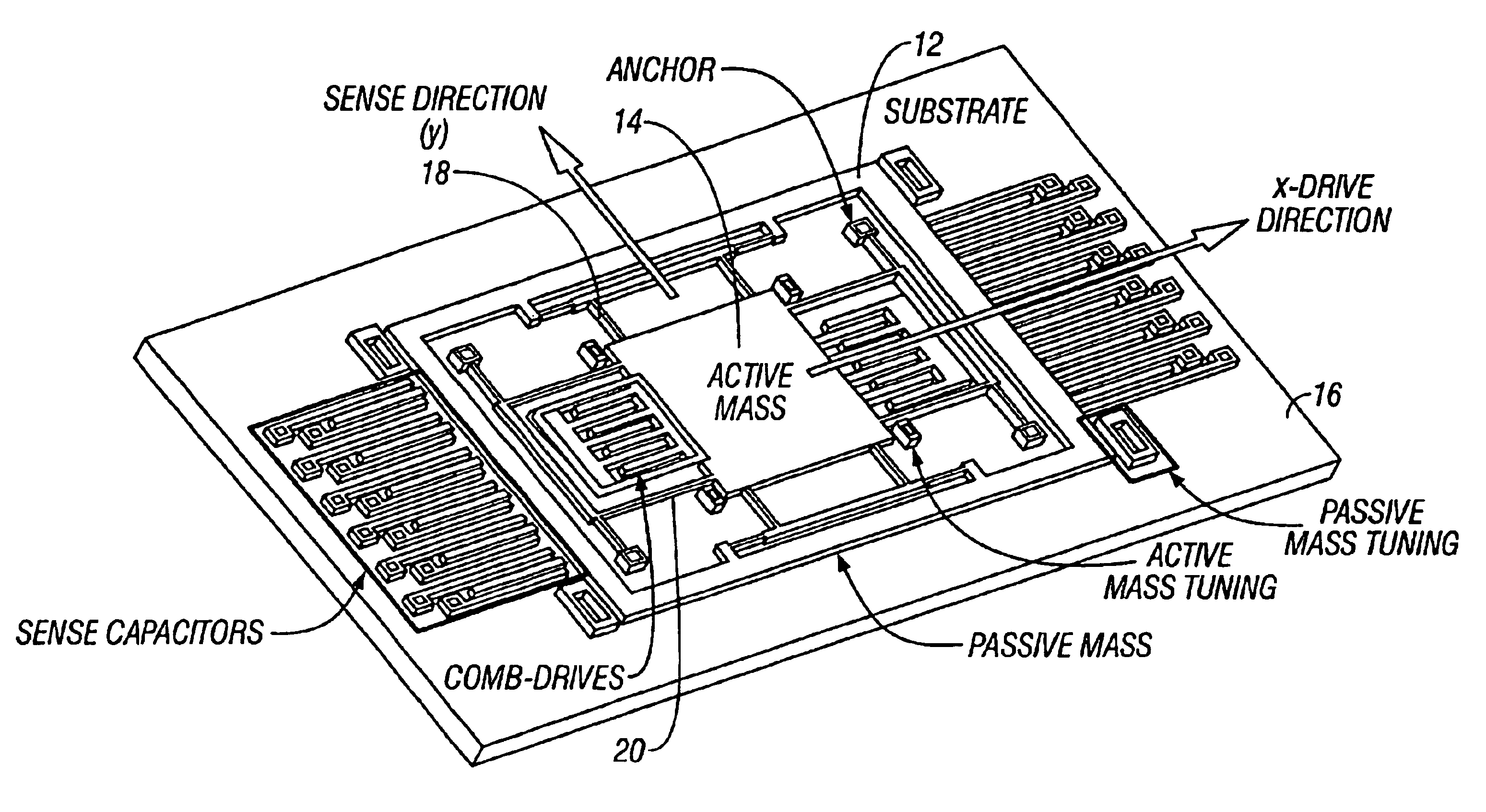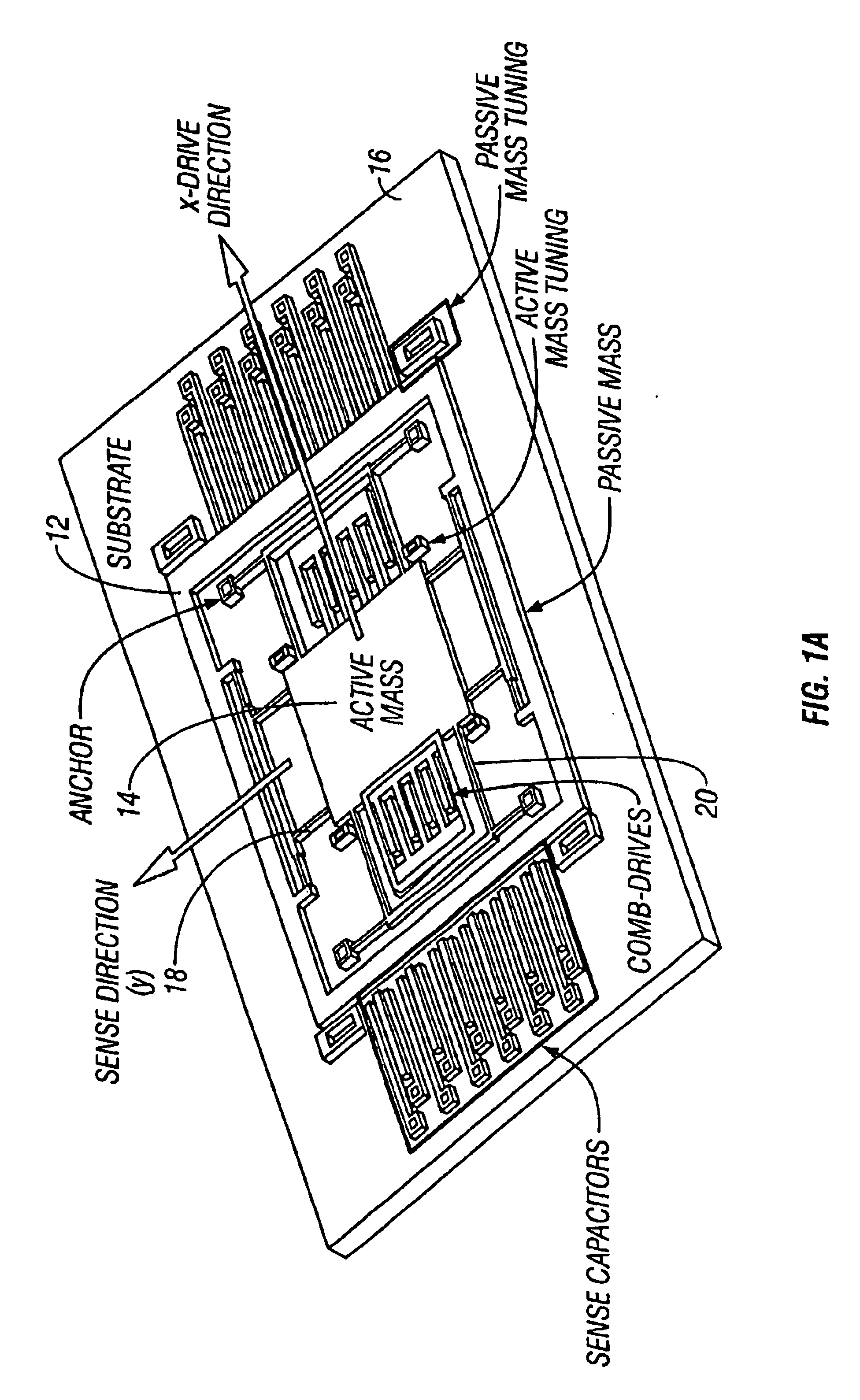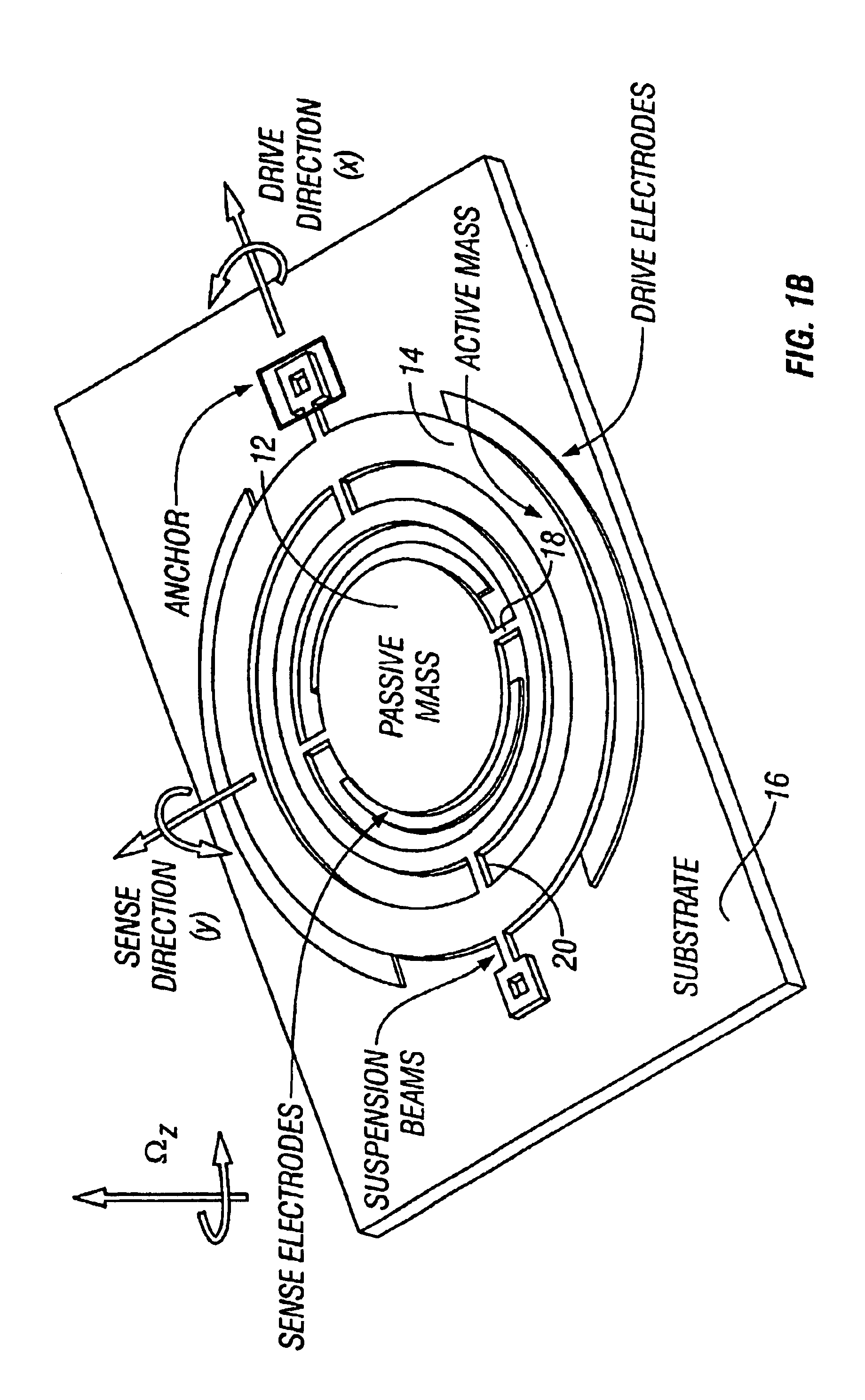Non-resonant four degrees-of-freedom micromachined gyroscope
a micro-machined gyroscope and non-resonant technology, applied in the direction of acceleration measurement using interia force, turn-sensitive devices, instruments, etc., can solve the problem of shifting in the resonant frequency, the most challenging type of gyroscope ever attempted, and the inability to achieve the most accurate measurement of the inertial sensor. , to achieve the effect of wide driving frequency range, favorable frequency response, and large oscillation amplitud
- Summary
- Abstract
- Description
- Claims
- Application Information
AI Technical Summary
Benefits of technology
Problems solved by technology
Method used
Image
Examples
Embodiment Construction
The conventional micromachined rate gyroscopes operate on the vibratory principle of a 2 degrees-of-freedom (DOF) system with a single proof mass suspended by flexures anchored to the substrate, which make the mass free to oscillate in two orthogonal directions, namely the drive and the sense directions. The proof mass is sustained in resonance in drive direction, and in the presence of an angular rotation, the Coriolis force proportional to the input angular rate is induced, exciting the proof mass in the sense direction. To achieve high gain, the drive and the sense resonant frequencies are typically designed to match, and the device is controlled to operate at the peak of their response curve. However, this resonance dependent approach results in high sensitivity to variations in system parameters. Only 1% shift in resonance frequency might produce over 20% error in the output signal gain, while major dynamical system parameters were observed to be likely to deviate by up to 15% ...
PUM
 Login to View More
Login to View More Abstract
Description
Claims
Application Information
 Login to View More
Login to View More - R&D
- Intellectual Property
- Life Sciences
- Materials
- Tech Scout
- Unparalleled Data Quality
- Higher Quality Content
- 60% Fewer Hallucinations
Browse by: Latest US Patents, China's latest patents, Technical Efficacy Thesaurus, Application Domain, Technology Topic, Popular Technical Reports.
© 2025 PatSnap. All rights reserved.Legal|Privacy policy|Modern Slavery Act Transparency Statement|Sitemap|About US| Contact US: help@patsnap.com



